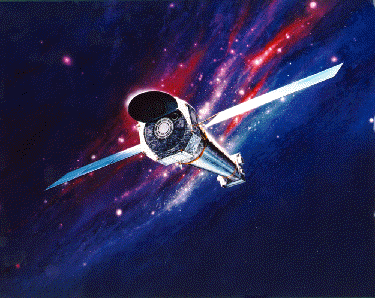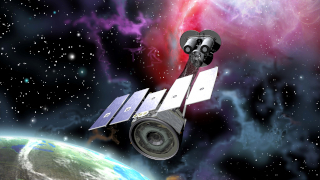

|
 |
Welcome to X-Ray Astronomy at Marshall Space Flight Center, Huntsville, Alabama. This page introduces the main emphases of our current work: Chandra Project Science, the Imaging X-ray Polarimetry Explorer, sub-arcsecond X-ray Optics, and Research in X-Ray Astronomy. The Chandra X-Ray Observatory (CXO), depicted at left, is one of NASA's Great Observatories. Chandra is managed by MSFC. The Harvard-Smithsonian Center for Astrophysics operates the Chandra X-Ray Center from Cambridge, MA. |
|
The Chandra Project Science team, led by Dr. Martin Weisskopf from inception until his retirement in 2022 and now in the hands of Project Scientist Dr. Steve O'Dell,
provides scientific and technical oversight of all
aspects of the CXO development,
a leading scientific role in the CXO Calibration, and
special studies and analyses as needed.
Chandra was launched from Space Shuttle Columbia on 23 July 1999. Chandra has since returned spectacular pictures and spectra of high-energy phenomena in astronomical objects such as that from the Crab Nebula shown at right. Here is the latest Chandra News from NASA. Our own investigations using Chandra data include the Crab Pulsar and Nebula, other Pulsar Wind Nebulae, planets, Ultraluminous X-ray sources, AGNs, and clusters of galaxies. |
 |
 |
A major aspect of our work at MSFC is the development, calibration, launch, and maintanence of the Imaging X-ray Polarimetry Explorer (IXPE) depicted at left. The X-ray team at MSFC includes the IXPE Principal Investigator, Dr. Phil Kaaret, Deputy PI Dr. Steve O'Dell, Project Scientist Dr. Steven Ehlert, and Science Operations Center lead scientist Dr. Allyn Tennant. |
|
In addition to hosting the PI team, the X-ray group at MSFC fabricated the IXPE mirrors and calibrated the mirrors and mirror/detector combinations, and continue to provide IXPE science operations, data analysis, and data archiving. |
|
Scientists in the MSFC X-ray group also contributed X-ray mirrors to the Astronomical Roentgen Telescope – X-ray Concentrator (ART-XC) instrument on board the Spectrum-Roentgen-Gamma (SRG) mission. In exchange, we have joint data rights for a portion of the sky being mapped in a series of all-sky surveys. Another major focus of the X-ray group at MSFC is the pursuit of high angular resolution X-ray optics. High-resolution, large-area, lightweight X-ray optics are a Tier 1 priority of NASA's Astrophysics Project Division. Technological advances are needed to enable next generation X-ray Probe and Flagship missions. Another Tier 1 priority technology is the development of low-stress, high-stability X-ray reflective coatings. Research in this area in the X-ray group at MSFC includes optimizing coating processes, reducing stress induced in the coating process, and developing multi-layer coatings that can greatly extend mirror response to high energies. The members of our group include civil servants in the Marshall Science Research and Projects Division Astrophysics Branch, NASA Postdoctoral Program Fellows, Universities Space Research Association scientists, and University of Alabama in Huntsville students and faculty in the Physics & Astronomy and Space Science departments. The QDP/PLT homepage provides some documentation for this software. |
| ||||